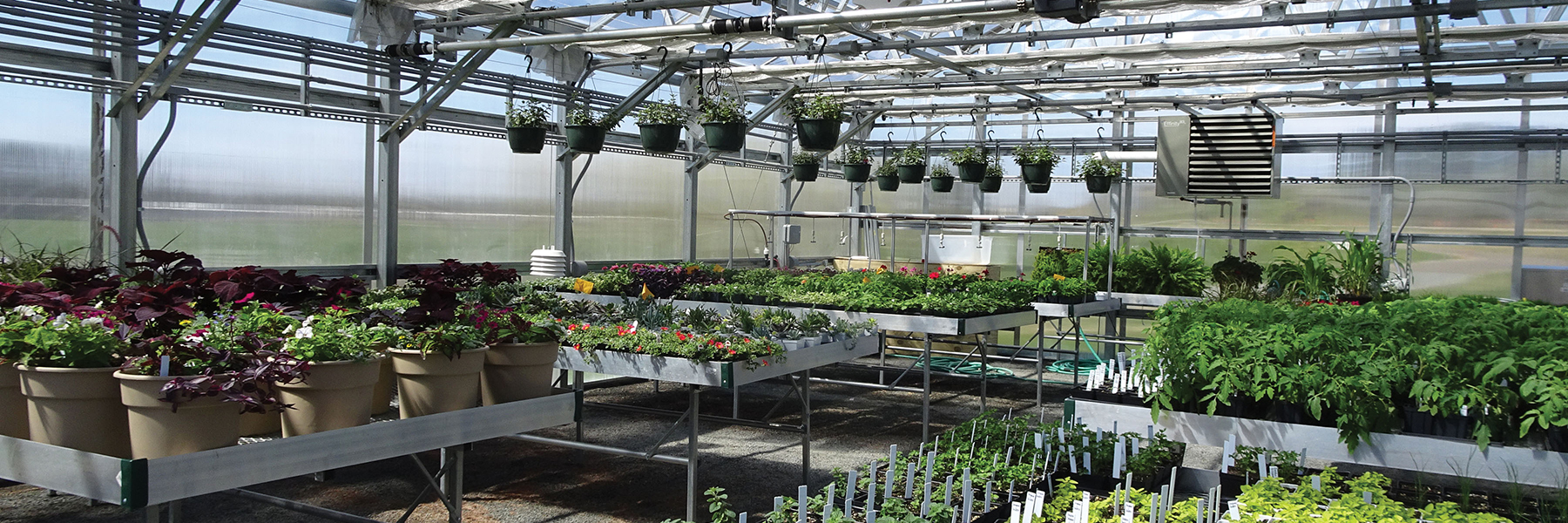Adding Heat to a Greenhouse
Sept. 26, 2017
A greenhouse is a major investment, but adding one to a growing operation can really take production to the next level by providing a protected space for early seed starting and season extension. Heating the greenhouse for those months when frost is a major risk for many climates can help maximize the potential for improved production. Adding a heating system is actually much more affordable than it seems, and choosing efficient equipment and designs can help growers get returns on their heating investments pretty quickly. It’s hard to decide sometimes, whether the best part of a heated greenhouse is increased profits or escaping wintry chills to farm in a T-shirt in the middle of January.
While designing a greenhouse with a heating system helps avoid refurbishing a structure later on, adding heat to an already existing greenhouse is not a difficult task, and there are a range of heating options within any budget and scale of operation. Properly calculating heating needs and choosing efficient products are two ways any grow operation can make a seamless transition into full-time growing.
To get help designing a heating system for your garage reach out to one of our Greenhouse Specialists or call 877.835.9996
Calculations
Being able to heat a greenhouse is a huge benefit to any grower and is a tangible way to generate optimal gains. The first task at hand when adding a heating system, is calculating the area that is being heated to make sure the system you are adding is sufficient. Heating units vary regarding how much space they can heat effectively, so only supplying a greenhouse with 2 units when 4 are required can leave plants out in the cold and the farmer’s budget depleted. The measurement used to measure thermal units is BTU or British thermal unit. BTU is calculated using ideal temperature range, surface materials and structure size. Calculate insulated and non-insulated surface area, the up and over measurement of your greenhouse arc and check to see the heat loss value of different materials, like poly film or polycarbonate.
Another piece of information growers will want to consider, is how many degrees your system will have to rise in temperature during the coldest parts of the year. So, say the coldest it gets in your region is around zero degrees Fahrenheit, and you’d like your greenhouse to be at least 50 degrees warmer at all times, your temperature rise would be 50 degrees. Performing accurate calculations is one of the ways to ensure accuracy in a heating system, and calculations can be done by using one of the many online calculators.
Many design experts want to know what will be grown in the heated greenhouse, because different crops have different heat requirements during various phases of their life cycle. With thermostats and automated technology, growers who have a variety of crops can amend and tailor their system to their desired temperatures throughout the year. Many crops will thrive within a range of 65-75 degrees Fahrenheit, but growers should make sure to familiarize themselves with the specifications of the crops they are growing. If farmers are only growing basil all year long, higher temperatures are ideal in comparison to lettuce, which thrives in cooler environments. If all that is grown are greens, the greenhouse will never need to get as hot as if tomatoes are grown. Different crops will require different amounts of heat and energy for production, so choosing an energy efficient option can go a long way in your budget.
Advice for an Energy-Efficient System
Heating can use a lot of energy, making it a potentially costly addition during certain times of the year. Luckily, there are tons of energy-efficient options on the market today that can help create a more affordable system with a lower environmental footprint. GrowSpan Greenhouse Specialists have access to the latest in heating technology and just a few minutes spent speaking to a greenhouse specialist can make a project like this seem way more manageable.
One of the biggest issues amateurs face when designing a heating system is infiltration of outdoor air into the greenhouse, which leads to extra, uncalculated heat loss. Making sure plastic siding is secured can help create a more efficient system without heat leaks. Building orientation and how an environmental control system is set up is vital to achieving optimal efficiency. Depending on your building orientation, the natural arc of the sun can aid in heating more effectively. Properly insulating walls that are not adding sunlight to a grow operation can help lower the degree of heat loss, saving fuel. Also, considering the season and strength of the sun, growers might want to utilize supplemental lighting during shorter, darker days.
Placement of equipment is super important during a greenhouse facelift. To make the most of greenhouse ventilation and heating systems, fans should be placed thoughtfully in the greenhouse in order to push air in a circular motion. Having properly calibrated tools that are protected from poor readings is also a way growers can be sure their readings are accurate and their greenhouse system is responding accordingly. For example, temperature readers should be placed at crop level, but should be protected from direct light that may skew a reading. Add a well-protected thermostat that hooks up to an automated system so the greenhouse never gets above or below desirable temperatures.
Making sure equipment maintains accuracy is the key to a controlled environment, and while it may seem like there are a lot of pieces to maintain, the result is totally worth it. Think about adding a heating system to the greenhouse this fall, and when January comes around, you too can be farming in a T-shirt.
Contributed by Amanda Williams

